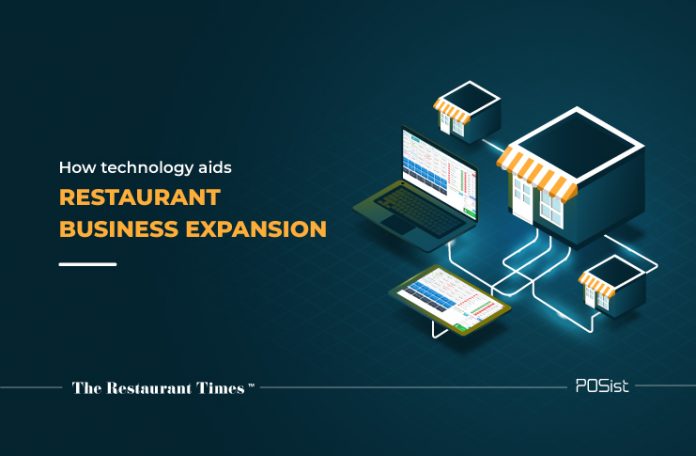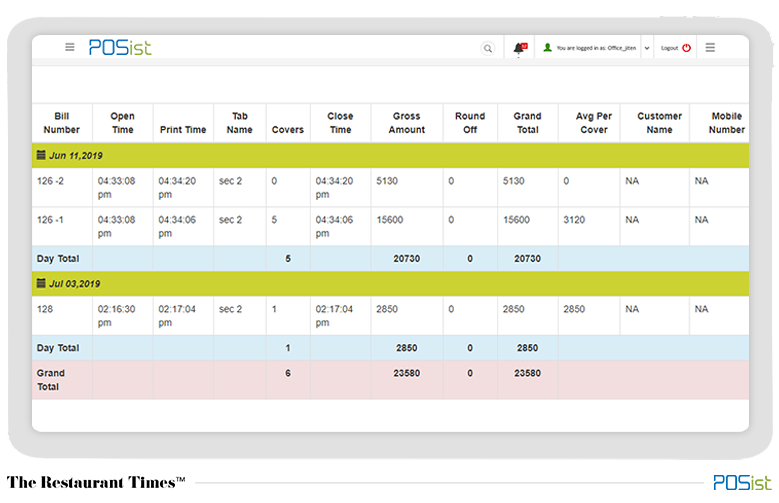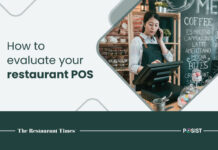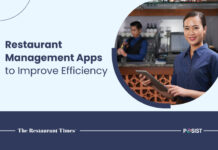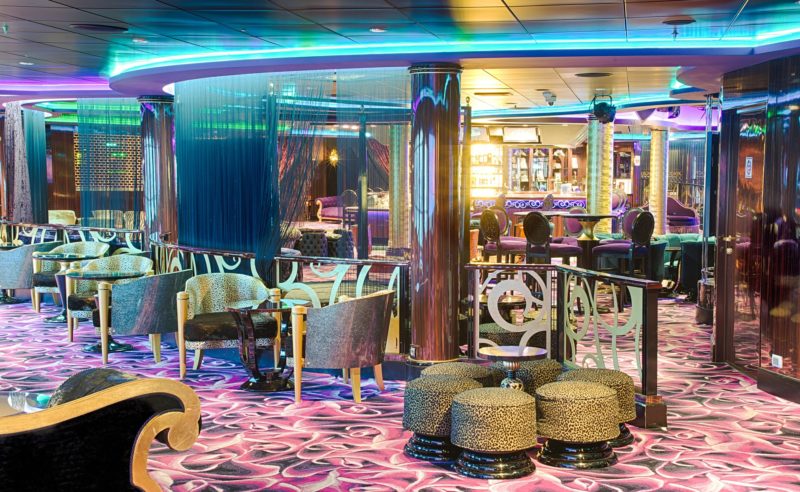While thinking of restaurant business expansion, the first question that should ideally pop into your head is the feasibility of your plan. Rather than fret over the entire issue, talking to a professional restaurant consultant or searching online for peer advice may help you put your ideas into perspective. We understand how daunting the entire process can be. This is why we have made you a comprehensive list of things to factor into your restaurant business expansion plan. More specifically, we bring you actionable information on how technology can help you grow your restaurant successfully.
Having a checklist beforehand would undoubtedly help you anticipate the problems you are likely to face. As they say, well begun is half done. The checklist could vary according to the size of your restaurant chain, but here are the top 7 things you need to do before you set your plan into action.
- Evaluating your current model
- Planning and market research
- Financial planning
- Incorporating a Central Management System
- Hire Right
- Consistency and quality
- Restaurant Marketing
Let’s take a few examples to understand how multinational chains have leveraged technology to expand their restaurant brands. Brands like Starbucks, Domino’s Pizza, Taco Bell, and Buffalo Wild Wings have a presence in multiple countries and are still growing in terms of reach and number of outlets. Most of these restaurant brands have their own mobile applications and restaurant management software to provide them with a platform to collect all their customer data at one place, and then use it to manage different outlets differently.
For instance, Starbucks has a dedicated loyalty rewards mobile application which is very popular with their customers. It is not surprising then that the app also handles around one-third of all customer orders the company gets. On the other hand, Buffalo Wild Wings created a game called ‘Fight For Fandom,’ as a part of their mobile application. It connects customers to other diners on the basis of their location and lets them interact and compete with each other. Customers find the application quite attractive t as it provides almost an extended real-life dining experience for them when they order from the app.
Technology has taken over the restaurant industry more than you think it has!
How To Leverage Technology For Restaurant Expansion
Here’s an insight from Harish Mithra, owner of True South, on the technology revolution taking place in the restaurant business.
“Getting all the reports about stock, staff, what’s being sold on the same day, how much stock is needed for the next day, online orders from all of your outlets has made my life so much easier. I love the way Posist brings all these reports together on one platform.”
We have branched the ways in which you can leverage technology for restaurant expansion into some broader categories, which are as follows:
1. Model Evaluation
Operating a restaurant chain owner understands the working of a restaurant chain is not clearly as easy as operating represents a different set of challenges than a standalone restaurant. For starters, we recommend that you measure the profitability of your current location. An ideal restaurant POS should be able to give you reports related to sales and customer preferences with regard to each outlet.
2. Customer Analysis
Understanding your customer base is the first step towards scaling your business. The problem here is that most restaurant management software until recently do not provide you an integrated data analytics features, where you could check what your customers have ordered in the past, their frequency of visiting, along with their preferred menu items.
Having an integrated data analytics, you can help analyze your data to develop high-quality structured reports in order to know what your customers want, thereby streamlining your restaurant business expansion.
In fact, an ideal POS should have all these reports already inbuilt for you as templates to make your work easier!
3. Consistency And Quality
As your restaurant expands to multiple locations, the key to an ever-increasing growth curve is maintaining the consistency and quality of service and effort that you put into your first venture.
What we recommend here is that you develop a long-term plan that allows you to scale your business when the opportunity presents itself put scalability on all of your processes, and ensure that the quality and consistency is maintained through your restaurant POS. Building a common template across the various restaurant operations, including kitchen, staff management, and other day-to-day functions can help you replicate your business model successfully.
Having a centralized system helps you maintain a single recipe across all of your outlets. It helps to maintain quality across your kitchens.
At the end of the day, no marketing technique is going to help you if you don’t serve good quality food consistently. Along with managing recipes centrally, the POS restaurant management system lets you can add or remove an item across all of your outlets, just by clicking an ‘Add’ button.
4. Managing Your Staff
The restaurant industry in India faces an attrition rate of more than 50%. (Source: economic times). For a business to scale and sustain, it becomes crucial that you hire the right people, and also manage them equally well. Look at it this way, your staff acts as the face of your restaurant. They are directly involved in generating your brand value. Using your staff reports, building a positive work environment, and incentivizing them for their good work is going to keep them with your restaurant for a longer time. This boosts up your restaurant business expansion.
On a similar note, Vijay Kumar, owner of Brownie Heaven further adds,
“Your staff is your customer, before your customers. Getting regular reports on what my staff is doing in real-time helped me understand the working of each of my outlets. Adding another outlet s becomes easier when you have such streamlined processes.”
5. Increasing Your Loyal Customer Base
As per Forbes, increasing your customer retention rate by 5% increases your sales by a massive 25-30%. Imagine! Expanding your restaurant would require you to nurture your existing customers, and not just attract new ones. Having researched on what makes a customer want to return to your restaurant, we have made you a checklist that you can use in your daily operations.
- Maintaining consistency across your outlets attracts customers again and again.
- The quality of food and customer satisfaction are the two major factors that determine the success of your new outlet. Around 23% of your customers come back for the sole reason of your quality of food and customer service.
- Staff retention leads to customer retention.
- Incorporate Loyalty Programs to let the customer know that you value them. Reward them with points that they can use for their further visits. Gamify their experience and remind them on a regular basis to use the points they have earned! Such habit-forming products and services will help you build strong customer loyalty over time.
- 3% of your customer base comes back to your restaurant for your ambiance. (Source: NRAI)
On speaking with Pranav Ahuja, founder of Xeno, a loyalty program, he mentions how gamifying the experiences for the customers can increase customer retention up to 2-5%. A further 15-20% uplift is observed when a restaurant markets its loyalty program effectively.
Learn more to understand the different ways of setting up an effective loyalty program at your restaurant here!
6. Online Ordering (Branded Mobile Apps)
Another important factor that comes into play while planning your restaurant business expansion is the integration and effective management of your online orders. Especially if your restaurant format is a QSR, or Quick Service Restaurant, a takeaway kitchen when your growth majorly depends on getting online orders, it is essential that you get all of them on one platform. Along with integrations, you should be looking for a restaurant management system technology that helps you minimize the time for order delivery.
For instance, if you own a QSR chain, and you receive an online order, it should ideally be pushed into the respective kitchen immediately after it is placed. With that happening, the kitchen should have the order displayed on their Kitchen Display System, and start preparing it accordingly. The system also mentions the approximate time it should take to prepare the order.
Now, while your order is being prepared, your system assigns it to the delivery executive, so that the food is in proper condition when it reaches the customer, and is not cold or mispackaged.
For example, Biryani By Kilo (BBK) leveraged their restaurant management system technology to minimize their delivery time, and thereby cater to more orders.
“Educating the customers on the need to wait for about 90 minutes to savor traditionally prepared and freshly cooked biryani is a challenge. We are using the latest technology to cut the delivery time to 60 minutes,” says Kaushik Roy, co-founder of BBK. (Source: economic times)
7. Sales Cash Flow
While speaking of restaurant business expansion, calculating your restaurant SWOT (Strengths, Weaknesses, Opportunities, and Threats) through real-time reports is a major game-changer for restaurateurs. Constant reporting and analysis helps them to know what is working and what is not in which outlet.
Your restaurant POS should be able to give you multiple reports on an hourly basis, contributing to a clear-cut Profit and Loss calculation. Since you have more than one outlets to take care of now, it is always better to have a comparative report for each outlet, in terms of the flow of money. This way you would know which outlet needs most of your attention at what time.
Here’s how an ideal POS report should look like, clearly indicating your growth percentage and having you make a compared analysis in minutes.
8. Restaurant Marketing
The ways in which a restaurateur markets his brand today has drastically changed. Social media has reduced the costs of marketing. In the food services industry, marketing spends constituted 4-6% of the total revenue for the majority of the companies for the financial year 2016, according to the India Food Services Report 2016 by the National Restaurant Association of India.
As you’re growing, your marketing techniques will have to be different for each of your outlets. This requires extensive research on the location and your target audience. What we recommend is multiple surveys and visits to the location before choosing it for your second outlet.
Ask yourself if the location will be able to replicate the success you enjoyed when you launched the first restaurant brand, will you be able to cater to the audience, does your restaurant format align with the location, can you find the missing element in the market, so on and so forth.
Along with that, leverage social media to create a pre-launch marketing campaign. make a grand entry into your market. Instagram is changing the way people are eating. In India, about 64 million people are present on Instagram, and around 60% of them use it on a daily basis. 90% of these people are below the age of 35 and are regularly interested in changing trends. (source: brandwatch)
Food businesses enjoy a massive fan following on Instagram. So, you can make a grand opening just by engaging your customers through social media. A business account on Instagram and Facebook also shows you analytics for each of your posts to keep track of your reach.
All in all, restaurant business expansion requires maintaining consistency and quality across all your outlets. Using the latest restaurant management technology solutions makes the entire process easier for you. So, you must invest in a POS that has all the ideal features we spoke of in this blog.
Furthermore, if you have any further doubts, feel free to contact us!


